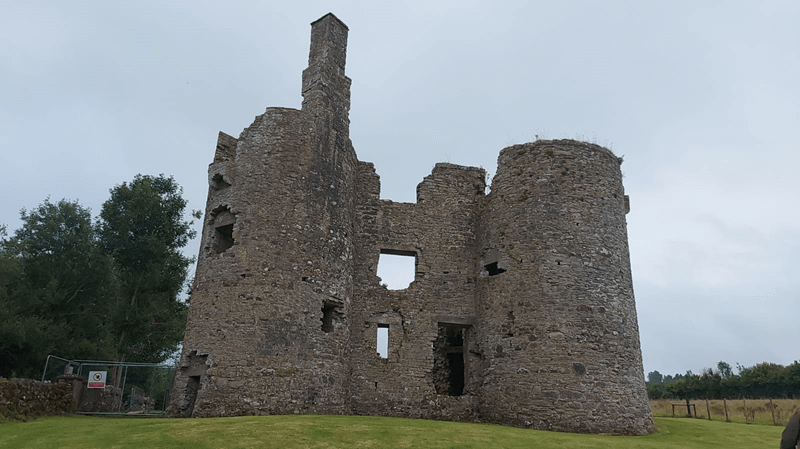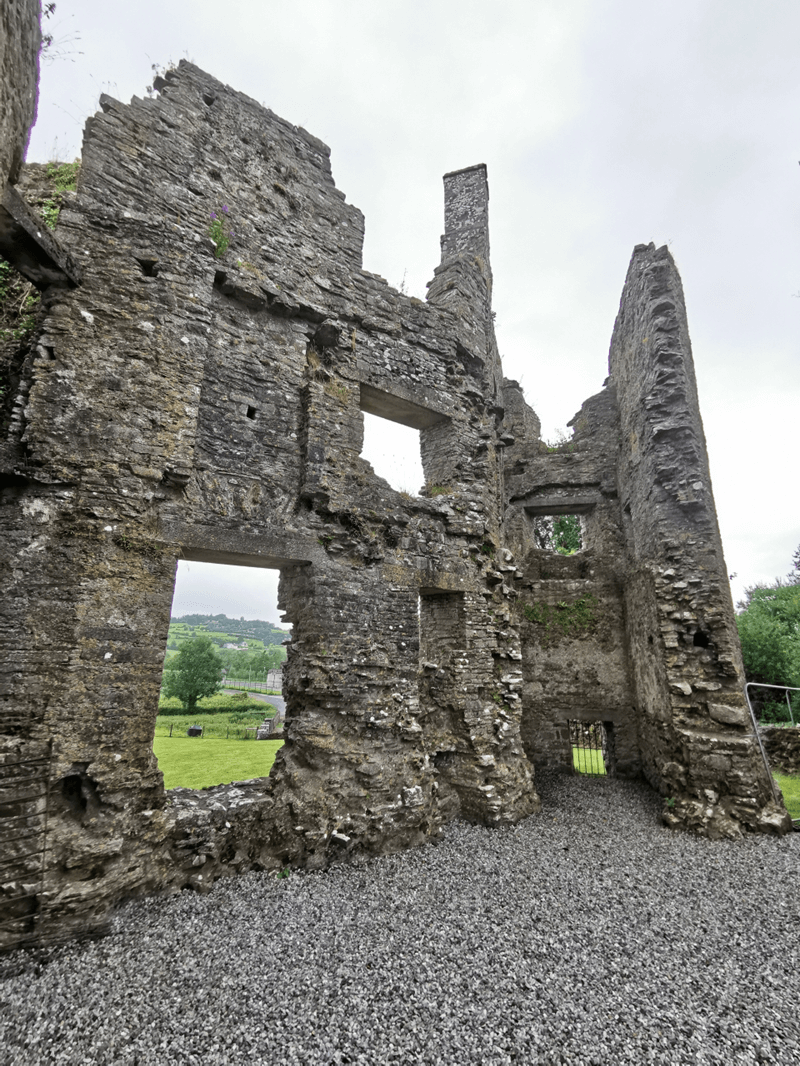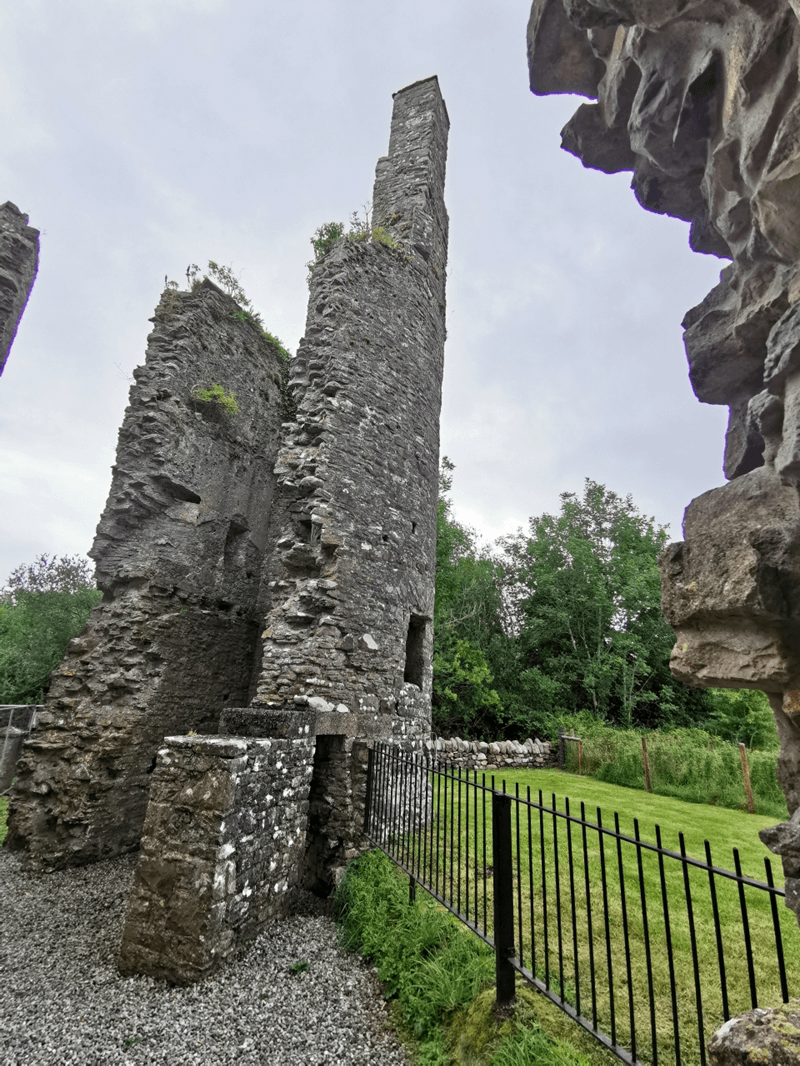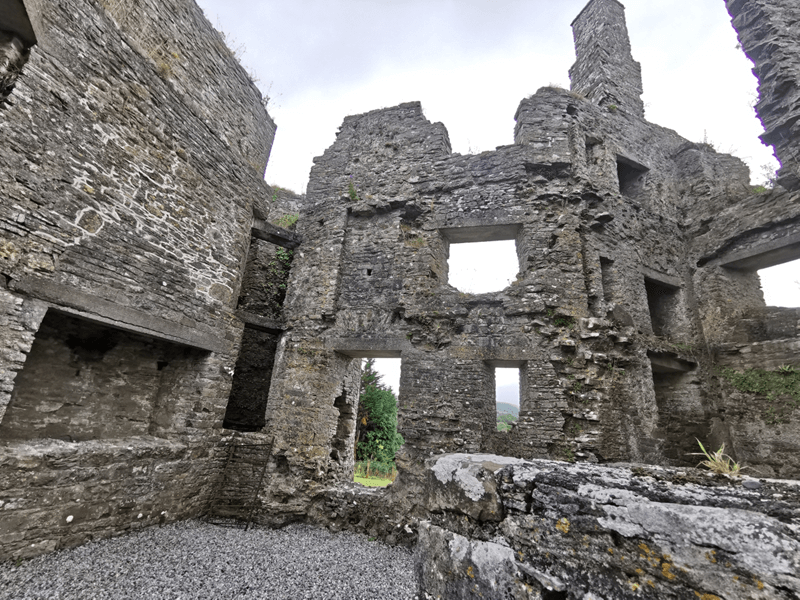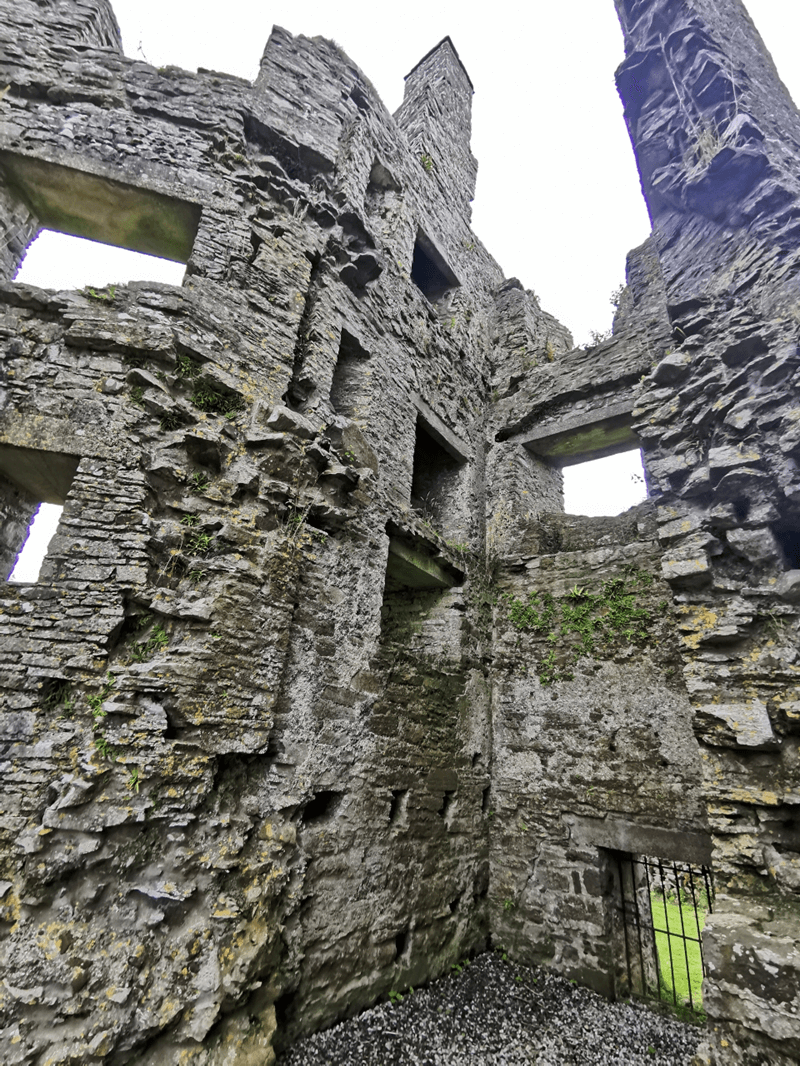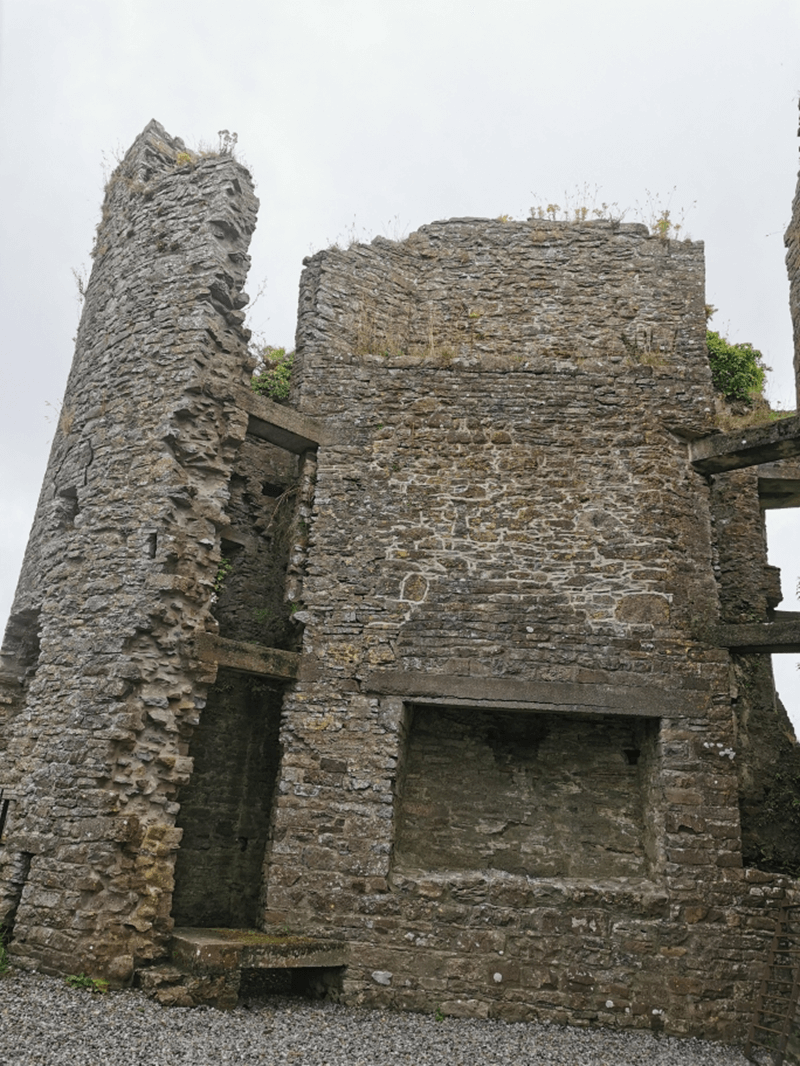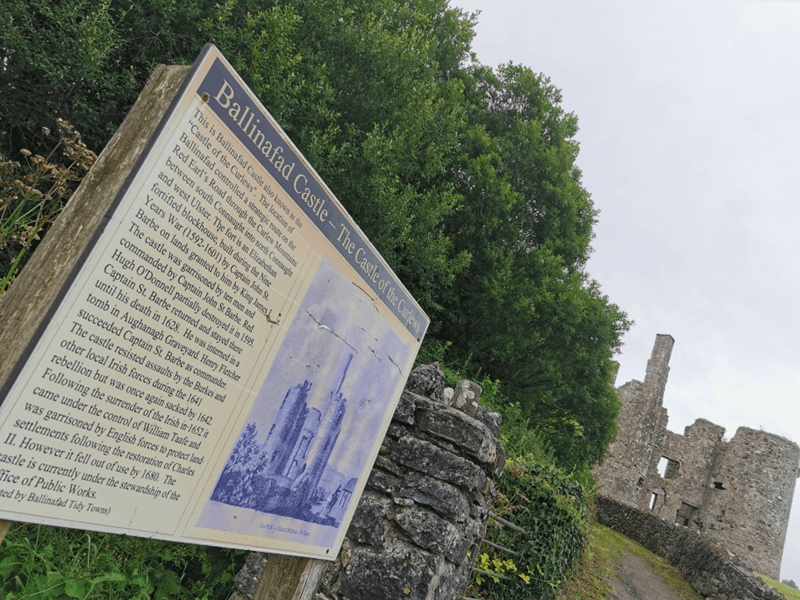History
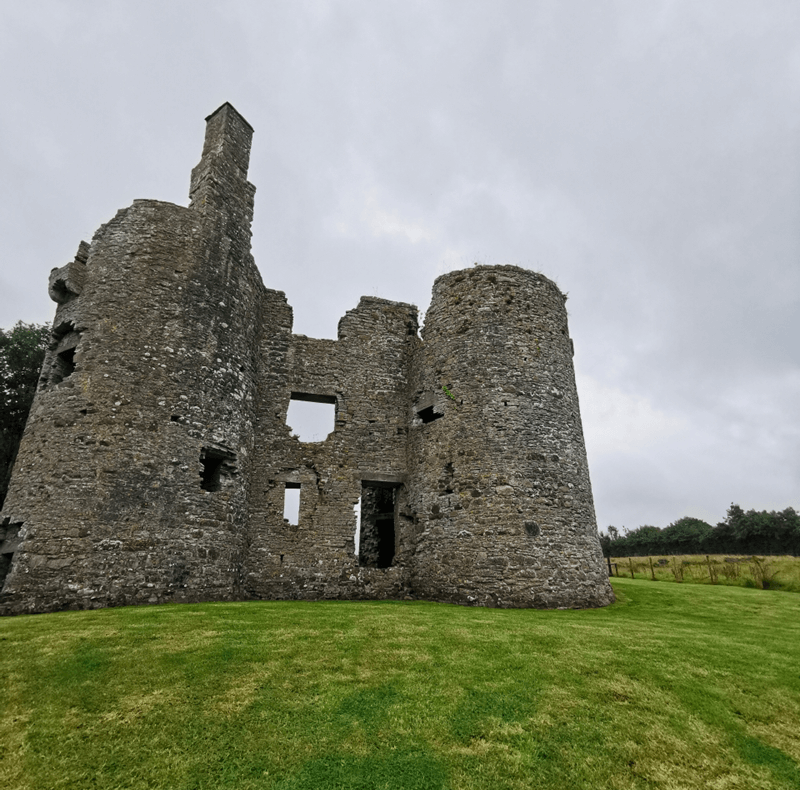
The plate at the entrance of the site, placed by Ballinafad Tidy Towns, gives the visitor a few useful information to dive into the history of Ballinafad Castle.
By reading the infomation on it, we learned that this Elizabethan fortified house was also named “Castle of the Curlews” and was erected in this location, overlooking Lough Arrow, most likely to control the traffic along the Red Earl’s Road, linking Ballymote to Boyle through the Curlew Mountains. Its construction dates back to the Nine Years’ War (1592 1601). King James I granted lands in this area to Captain John St. Barbe, who was responsible for the construction of this building at Ballinafad.
The design followed the style of the 13th century Anglo Norman castles [1, 2]. It consists of a nearly rectangular main keep, measuring 10.6m by 8m, with four 6m diameter towers at the corners [1]. Numerous gun loops are present and fireplaces can be recognized on the east and north towers [2].
The castle was garrisoned by ten men led by Captain Barbe himself however, in 1595, the powerful Irish chieftain Red Hugh O’Donnell managed to partially destroy it. Captain St. Barbe then returned at Ballinafad and occupied the castle until he died in 1628. He was succeeded by Henry Fletcher.
During the Irish rebellion of 1641, the Burkes and other Irish forces attacked the castle, which was sacked by 1642. In 1652, with the Cromwellian conquest of Ireland, it came under the control of William Taafe and was garrisoned by English forces.
Perhaps, after the restoration of Charles I, it might have also been used for the chancery inquisitions for the Sligo area [3, 4].
The castle was already abandoned by 1680 and today is in the care of the Office of Public Works (OPW).
For the very curious visitor who would like to enjoy a virtual tour of Ballinafad castle, we found a very nice video on the Youtube channel of “Castles of Ireland”, that we recommend to watch [5].
References
- [1] DiscoverIreland, Ballinafad Castle
- [2] Ask about Ireland, Ballinafad
- [3] Curious Ireland, Ballinafad Castle, Ballinafad. County Sligo 1590
- [4] Beara-Breifne Way, Ballinafad Castle
- [5] Youtube channel of Castles of Ireland, Ballinafad Castle - County Sligo Ireland
